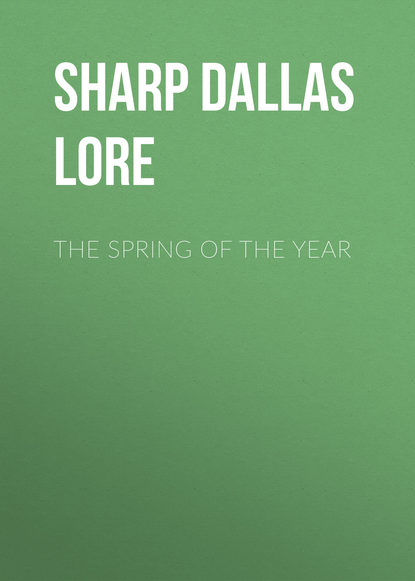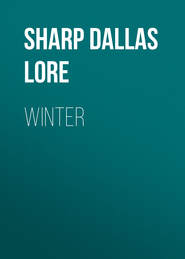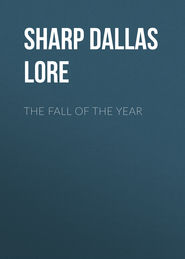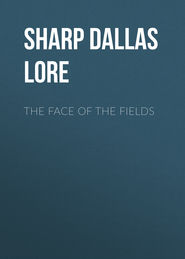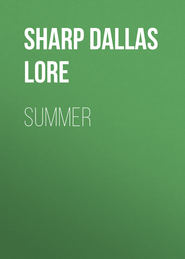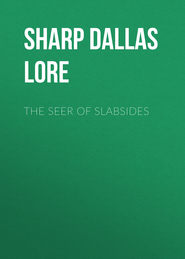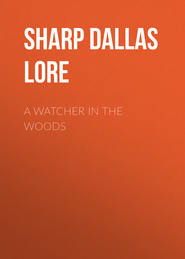По всем вопросам обращайтесь на: info@litportal.ru
(©) 2003-2024.
✖
The Spring of the Year
Настройки чтения
Размер шрифта
Высота строк
Поля
FOR THE PUPIL
Page 1
Have you ever seen a “spring peeper” peeping? You will hear, these spring nights, many distinct notes in the marshes, and when you have seen all of the lowly musicians you will be a fairly accomplished naturalist. Let the discovery of “Who’s Who among the Frogs” this spring be one of your first outdoor studies. The picture shows you Pickering’s hyla, blowing his bagpipe. Arbutus: trailing arbutus (Epigæa repens), sometimes called ground-laurel, and mayflower, fishflower (in New Jersey).
hepatica: liver-leaf (Hepatica triloba).
Spice-bush: wild allspice, fever-bush, Benjamin-bush (Benzoin æstivale).
Wood-pussy: the skunk, who comes out of his winter den very early in spring, and whose scent is one of the characteristic odors of a New England spring.
Page 2
All white and still: The whole poem will be found on the last page of “Winter,” the second book in this series.
trillium: the wake-robin. Read Mr. Burroughs’s book “Wake-Robin,” – the first of his outdoor books.
Page 4
phœbe: See the chapter called “The Palace in the Pig-Pen.”
bloodroot: Sanguinaria canadensis. See the picture on this page. So named because of the red-orange juice in the root-stalks, used by the Indians as a stain.
marsh-marigolds: The more common but incorrect name is “cowslip.” The marsh-marigold is Caltha palustris and belongs with the buttercup and wind-flower to the Crowfoot Family. The cowslip, a species of primrose, is a European plant and belongs to the Primrose Family.
Page 5
woolly-bear: caterpillar of the isabella tiger moth, the common caterpillar, brown in the middle with black ends, whose hairs look as if they had been clipped, so even are they.
mourning-cloak: See picture, page 77 of “Winter,” the second book of this series. The antiopa butterfly.
juncos: the common slate-colored “snowbirds.”
witch-hazel: See picture, page 28 of “The Fall of the Year”; read description of it on pages 31-33 of the same volume.
bluets: or “innocence” (Houstonia cœrulea).
Page 6
the Delaware: the Delaware River, up which they come in order to lay their eggs. As they come up they are caught in nets and their eggs or “roe” salted and made into caviar.
Cohansey Creek: a small river in New Jersey.
Lupton’s Meadows: local name of meadows along Cohansey Creek.
CHAPTER II
TO THE TEACHER
Read Kipling’s story in “The Second Jungle Book” called “The Spring Running.” Both Jungle Books ought to be in your school library. Spring is felt on the ocean as well as over the land; life is all of one piece; the thrill we feel at the touch of spring is felt after his manner and degree by bird and beast and by the fish of the sea. Go back to the last paragraph of chapter I for the thought. Here I have expanded that thought of the tides of life rising. See the picture of the herring on their deep sea run on page 345 of the author’s “Wild Life Near Home.” Let the chapter suggest to the pupils the mysterious powers of the minds of the lower animals.
FOR THE PUPIL
Page 7
Mowgli: Do you know Mowgli of “The Jungle Book”?
Chaucer: the “Father of English Poetry.” This is one of the opening lines of the Prologue to the Canterbury Tales.
Page 8
migrating birds: See “The Great Tidal Waves of Bird Life” by D. Lange, in the “Atlantic Monthly” for August, 1909.
Page 9
The cold-blooded: said of those animals lower than the mammals and birds, that have not four-chambered hearts and the complete double blood-circulation.
Weymouth Back River: of Weymouth, Massachusetts.
Page 10
catfish: or horn-pout or bull-pout, see picture, page 12.
Page 11
stickleback: The little male stickleback builds a nest, drives the female into it to lay her eggs, then takes charge of the eggs until the fry hatch out and go off for themselves.
CHAPTER III
TO THE TEACHER
You will try to get three suggestions out of this chapter for your pupils: First, that an old tree with holes may prove to be the most fruitful and interesting tree in the neighborhood, that is to say, nothing out of doors is so far fallen to pieces, dead, and worthless as to be passed by in our nature study. (Read to them “Second Crops” in the author’s “A Watcher in the Woods.”) Secondly: the humble tree-toad is well worth the most careful watching, for no one yet has told us all of his life-story. Thirdly: one of the benefits of this simple, sincere love of the out-of-doors will come to us as rest, both in mind and body, as contentment, too, and clearer understanding of what things are worth while.
FOR THE PUPIL
Page 14
burlap petticoat: a strip of burlap about six inches wide tied with a string and folded over about the trunks of the trees under which the night-feeding gypsy moth caterpillars hide by day. The burlaps are lifted and the worms killed.
a peddler’s stall: In the days of the author’s boyhood peddlers sold almost everything that the country people could want.
Page 16
grim-beaked baron: the little owl of the tree.
keep: an older name for castle; sometimes for the dungeon.
Page 20
Page 1
Have you ever seen a “spring peeper” peeping? You will hear, these spring nights, many distinct notes in the marshes, and when you have seen all of the lowly musicians you will be a fairly accomplished naturalist. Let the discovery of “Who’s Who among the Frogs” this spring be one of your first outdoor studies. The picture shows you Pickering’s hyla, blowing his bagpipe. Arbutus: trailing arbutus (Epigæa repens), sometimes called ground-laurel, and mayflower, fishflower (in New Jersey).
hepatica: liver-leaf (Hepatica triloba).
Spice-bush: wild allspice, fever-bush, Benjamin-bush (Benzoin æstivale).
Wood-pussy: the skunk, who comes out of his winter den very early in spring, and whose scent is one of the characteristic odors of a New England spring.
Page 2
All white and still: The whole poem will be found on the last page of “Winter,” the second book in this series.
trillium: the wake-robin. Read Mr. Burroughs’s book “Wake-Robin,” – the first of his outdoor books.
Page 4
phœbe: See the chapter called “The Palace in the Pig-Pen.”
bloodroot: Sanguinaria canadensis. See the picture on this page. So named because of the red-orange juice in the root-stalks, used by the Indians as a stain.
marsh-marigolds: The more common but incorrect name is “cowslip.” The marsh-marigold is Caltha palustris and belongs with the buttercup and wind-flower to the Crowfoot Family. The cowslip, a species of primrose, is a European plant and belongs to the Primrose Family.
Page 5
woolly-bear: caterpillar of the isabella tiger moth, the common caterpillar, brown in the middle with black ends, whose hairs look as if they had been clipped, so even are they.
mourning-cloak: See picture, page 77 of “Winter,” the second book of this series. The antiopa butterfly.
juncos: the common slate-colored “snowbirds.”
witch-hazel: See picture, page 28 of “The Fall of the Year”; read description of it on pages 31-33 of the same volume.
bluets: or “innocence” (Houstonia cœrulea).
Page 6
the Delaware: the Delaware River, up which they come in order to lay their eggs. As they come up they are caught in nets and their eggs or “roe” salted and made into caviar.
Cohansey Creek: a small river in New Jersey.
Lupton’s Meadows: local name of meadows along Cohansey Creek.
CHAPTER II
TO THE TEACHER
Read Kipling’s story in “The Second Jungle Book” called “The Spring Running.” Both Jungle Books ought to be in your school library. Spring is felt on the ocean as well as over the land; life is all of one piece; the thrill we feel at the touch of spring is felt after his manner and degree by bird and beast and by the fish of the sea. Go back to the last paragraph of chapter I for the thought. Here I have expanded that thought of the tides of life rising. See the picture of the herring on their deep sea run on page 345 of the author’s “Wild Life Near Home.” Let the chapter suggest to the pupils the mysterious powers of the minds of the lower animals.
FOR THE PUPIL
Page 7
Mowgli: Do you know Mowgli of “The Jungle Book”?
Chaucer: the “Father of English Poetry.” This is one of the opening lines of the Prologue to the Canterbury Tales.
Page 8
migrating birds: See “The Great Tidal Waves of Bird Life” by D. Lange, in the “Atlantic Monthly” for August, 1909.
Page 9
The cold-blooded: said of those animals lower than the mammals and birds, that have not four-chambered hearts and the complete double blood-circulation.
Weymouth Back River: of Weymouth, Massachusetts.
Page 10
catfish: or horn-pout or bull-pout, see picture, page 12.
Page 11
stickleback: The little male stickleback builds a nest, drives the female into it to lay her eggs, then takes charge of the eggs until the fry hatch out and go off for themselves.
CHAPTER III
TO THE TEACHER
You will try to get three suggestions out of this chapter for your pupils: First, that an old tree with holes may prove to be the most fruitful and interesting tree in the neighborhood, that is to say, nothing out of doors is so far fallen to pieces, dead, and worthless as to be passed by in our nature study. (Read to them “Second Crops” in the author’s “A Watcher in the Woods.”) Secondly: the humble tree-toad is well worth the most careful watching, for no one yet has told us all of his life-story. Thirdly: one of the benefits of this simple, sincere love of the out-of-doors will come to us as rest, both in mind and body, as contentment, too, and clearer understanding of what things are worth while.
FOR THE PUPIL
Page 14
burlap petticoat: a strip of burlap about six inches wide tied with a string and folded over about the trunks of the trees under which the night-feeding gypsy moth caterpillars hide by day. The burlaps are lifted and the worms killed.
a peddler’s stall: In the days of the author’s boyhood peddlers sold almost everything that the country people could want.
Page 16
grim-beaked baron: the little owl of the tree.
keep: an older name for castle; sometimes for the dungeon.
Page 20





